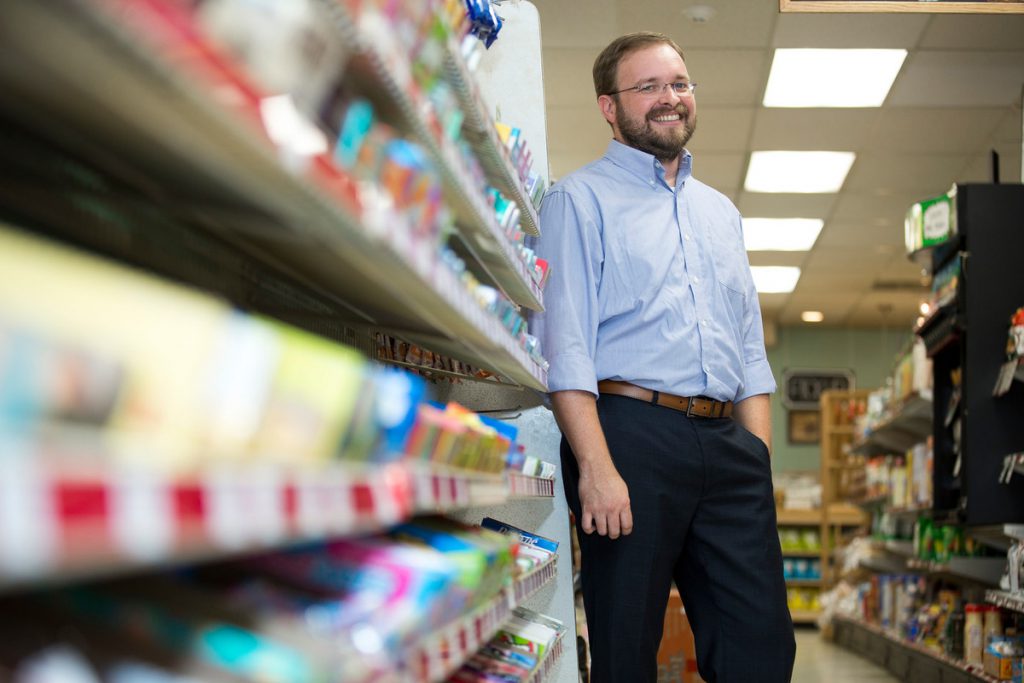“Product returns have never, to our knowledge, been explicitly included as a stage in a major customer journey model,” the authors note in their paper. “This exclusion represents a strategic blind-spot for marketers.”
In December 2020, Linne Fulcher, vice president, customer strategy, science and journeys at Walmart U.S., published a blog post that outlined Walmart’s new return policy. Dubbed “Carrier Pickup by FedEx,” the service was just in time for the holidays, free, and “here to stay,” Fulcher wrote. He described the policy as “an incredibly convenient way to make that unwanted gift ‘magically’ disappear,” whether customers bought items in a store, online, or from a third party vendor. “We want the returns experience to be easy, safe and seamless,” he added.
Returns are big business. According to the National Retail Federation (NRF), U.S. consumers returned an estimated $428 billion worth of merchandise last year—approximately 10.6 percent of total U.S. retail sales. The numbers for ecommerce are even more startling: online shopping accounted for roughly $565 billion of 2020 retail sales, of which $102 billion in merchandise—about 18 percent—was returned. However, retail advisory firm Optoro noted in 2019 that of 117 top retailers, not even a third of them quantify the full cost of returns.
Even before the pandemic hit, Sandy Jap, Sarah Beth Brown professor in marketing, Ryan Hamilton, associate professor of marketing, and former Goizueta Business School dean, Tom Robertson, were perplexed at how little academic research existed regarding returns. “Instead of viewing returns as a nuisance and an added cost, they are an opportunity to engage with customers and build brand loyalty,” explained Robertson, currently the Joshua J. Harris professor and professor of marketing at the Wharton School of the University of Pennsylvania, academic director, Jay H. Baker Retailing Center at Wharton, and the executive director of the Wharton-INSEAD Alliance. “Returns are part and parcel of the new retail landscape. This has been exacerbated by the strong uptick in online.”
To help retailers identify opportunities, Jap, Hamilton and Robertson wrote “Many (Un)happy Returns? The Changing Nature of Retail Product Returns and Future Research Directions,” published in Journal of Retailing last year. The article is essentially a researcher’s road map for exploring this “strategically important area,” said Jap.
Some retailers, such as Warby Parker and Stitch Fix, have built returns into their business models. Others, like Zappos and Nordstrom, have made consumer-generated returns easy, assuming that doing so engenders brand loyalty and repeat business. Yet most retailers seem “to lack a coherent philosophy” on returns and “appear not to have built return rates into their business models at all,” the trio state in their paper.
“There are so many interesting and important questions to be answered around product returns,” said Hamilton. “Important as returns are, the academic marketing research has barely scratched the surface.”
“Many (Un)happy Returns” highlights five specific areas where advancements in theory and practice would provide opportunity for greater understanding:
- How product returns transform the customer journey
- The “dark side” of returns—exploring the gray area between justified returns and outright fraud
- The effects of returns on traditional retailer supply chains
- Customer response to easy product returns and practices
- The effect of retailers’ product return practices on their reputation
“These questions represent a range of important directions for assembling a body of work on retailer-initiated and customer-initiated return behaviors and processes,” they write. “Ultimately, these might serve to improve the performance of return forecasting models, illuminate optimal go-to-market strategies and distribution processes in the evolving, technology-oriented marketplace that characterizes retailing today.”
Returns and the customer journey

According to eMarketer, 70 percent of consumers make purchase decisions based on a retailer’s return policies. Consumers tend to use returns strategically, especially online, where they often buy multiple sizes or styles with the expectation that they’ll keep only a portion of what they ordered and return the rest. “Too often, product returns are treated strictly as an operations problem,” Hamilton explained. “But they are increasingly an integral part of the customer journey and something that marketers need to account for in their business model.”
Jap would like to see retailers “rethink the purchase process from the user’s point of view,” she said. With the use of technology and data, returns can be a source of information gathering, she explained. Does the return lead to an exchange and to a happy customer? Does the customer abandon the retailer and start a journey with another one?
The dark side of returns
According to the NRF, nearly six percent of total returns in 2020 were fraudulent. Jap, Hamilton and Robertson admit that there is a needle to thread when deciphering what is and isn’t a fraudulent return. They contend that regarding returns, retailers will likely need to choose between a strict approach (perhaps not granting returns to those who have genuine claims) or a lenient one (possibly granting returns to those who do not warrant them) based on their overall customer strategy.
Research in this area could help retailers identify conditions that minimize rewarding fraudulent returns or punishing legitimate ones. Research would also help retailers develop customer “risk scores” based on return behavior. Some retailers, like Amazon, already analyze customer data to weed out excessive returners.
Returns and supply chain

“Retailers aren’t used to processing a lot of returns and they don’t necessarily have good or effective processes to handle them,” explained Jap. Returned items need to be inspected, sorted, restocked, or disposed of, all factors that increase operational costs. “Customers now expect generous returns policies, but unless businesses plan well, the way they handle those returns can eat up all the profit they make on sales—and more,” added Hamilton.
“Research is needed on the optimal resolution and handling of risk allocation, inventory management, and product handling practices that arise from increased returns at retail,” the authors write.
Are we training consumers to return?
While it’s likely true that ease of customer returns leads to future sales and brand loyalty, “it is also true that easy customer returns almost certainly encourage more returns,” the authors state in their paper. Companies with easy return policies are effectively training shoppers to expect similar policies from other retailers. “Research could investigate the factors that speed or inhibit the changing of customer returns behavior,” Jap, Hamilton and Robertston write. “What are the best ways for a retailer in a return-friendly marketplace to reduce returns without damaging the brand or evoking customer backlash?”
The effects of return policies on a retailer’s brand.
Each year, an estimated 5 billion pounds of landfill waste is attributed to returns that can’t be restocked or sold to off-price outlets. Prestige brands such as Burberry, whose customers expect exclusivity and quality, have come under fire for destroying millions of dollars of returned and/or unsold apparel. “From this perspective, return policies may be an important part of brand image management,” the professors note in their article. They suggest that research would help retailers determine how best to balance “competing image concerns.”
Fulcher addressed the issue of items “going to waste,” in her blog post to customers. Last year, through its various recycling programs, Walmart was able to recycle enough of its returned products to produce approximately 1.9 million pounds of plastic resin that the retailer will use to manufacture more than 9.2 million products. “These are all things retailers should think about,” said Jap. “They are opportunities, not problems.”
The new normal and a call to action
“Enlightened retailers are recognizing that returns are a key component of their business model,” explained Robertson. Academic research would help retailers tailor insightful return policies that help their bottomline and engage customers. “Customer expectations, norms, and behavior have shifted dramatically in a short period of time,” the authors write. “The dynamism of retailer innovations in handling customer returns has not—yet—been matched by academic research as to the questions these new practices have raised.”











